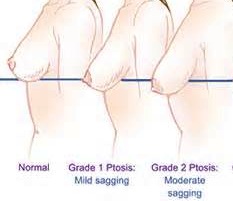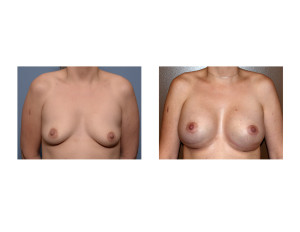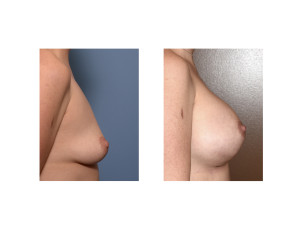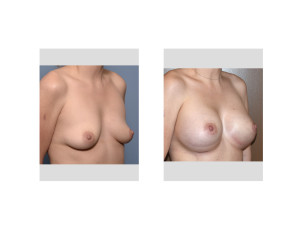
The most challenging breast sagging problem in breast implant surgery, in my experience and opinion, is the woman with a more mild or first degree breast ptosis. The amount of sagging they have is not quite enough to justify a breast lift. But there is enough sagging that the implants will likely drive down the nipple on the breast mound in a more downward direction or force most of the breast mound on the bottom side of the implant. This is a particular risk when the patients desires larger breast implant sizes.
In mild cases of breast sagging there are several strategies to help the breast mound and nipple get centered over the implants. The most common approach is to lower the inframammary folds (IMF) to center the implants over the low hanging nipple. An accompanying technique is a superior crescent mastopexy or an upper nipple lift. This simple technique helps move the nipple up on the breast mound up to 1 cm superiorly
Case Study: This 34 year-old female wanted breast implant surgery but had some moderate breast sagging after multiple pregnancies. She did not appear to have enough sagging to warrant a breast lift and did want such scars anyway. She also wanted larger breast implants.


Management of the persistent fold crease in breast implant surgery when the inframammary folds (IMF) are lowered can be done through several strategies. One technique is further rigotomies of the crease line with underlying fat grafting. Another technique is to reposition the implants up higher and re-establish the original inframammary fold levels.
Highlights:
1) Breasts that have mild to moderate degrees of sagging poses challenges in breast implant surgery.
2) Lowering of the inframammary fold (IMF) is one maneuver in breast implant surgery that can help avoid the need for a more formal breast lift.
3) Persistence of the original inframammary fold crease is one of the trade-offs, as well as the risk of bottoming out, when the inframammary fold is lowered in breast implant surgery.
Dr. Barry Eppley
Indianapolis, Indiana



